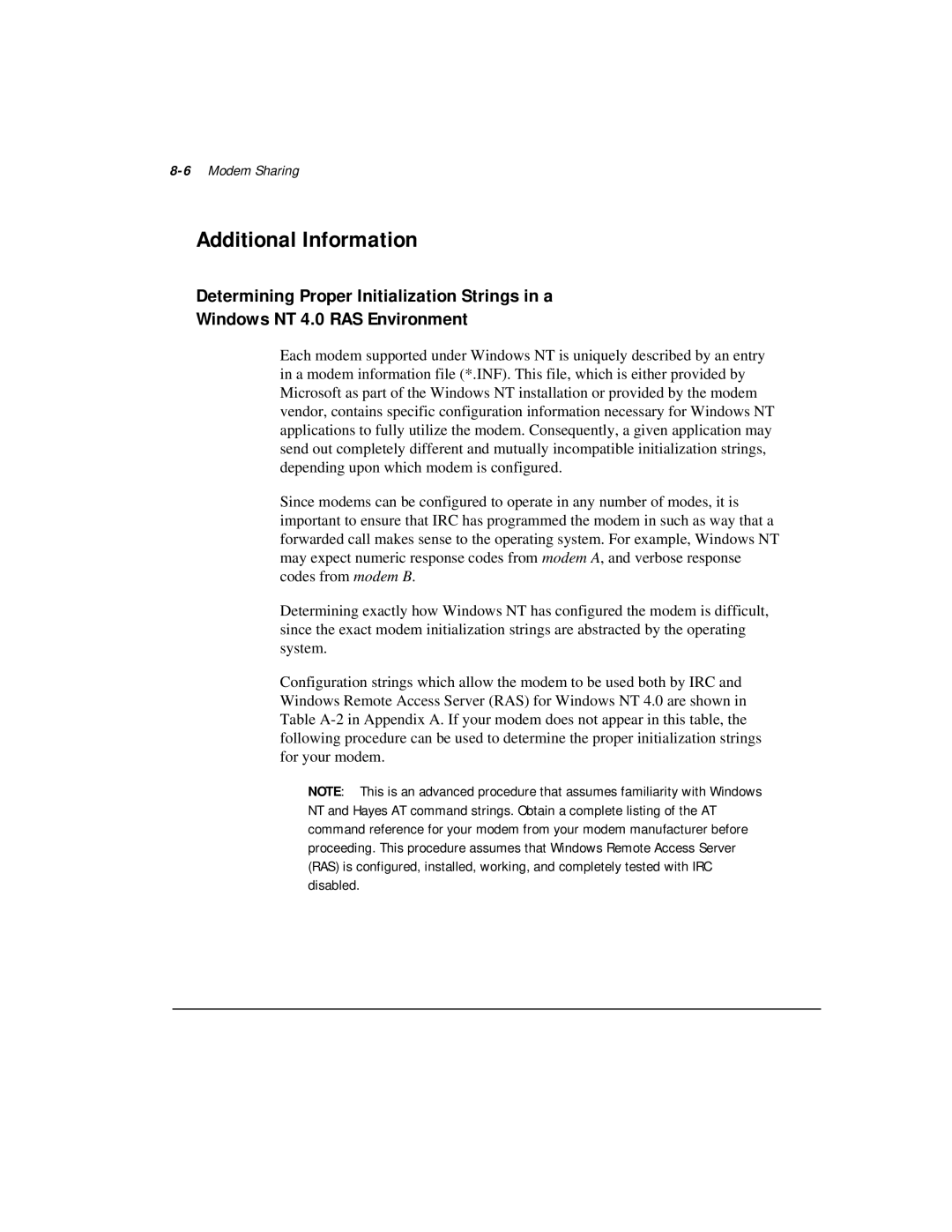8-6 Modem Sharing
Additional Information
Determining Proper Initialization Strings in a
Windows NT 4.0 RAS Environment
Each modem supported under Windows NT is uniquely described by an entry in a modem information file (*.INF). This file, which is either provided by Microsoft as part of the Windows NT installation or provided by the modem vendor, contains specific configuration information necessary for Windows NT applications to fully utilize the modem. Consequently, a given application may send out completely different and mutually incompatible initialization strings, depending upon which modem is configured.
Since modems can be configured to operate in any number of modes, it is important to ensure that IRC has programmed the modem in such as way that a forwarded call makes sense to the operating system. For example, Windows NT may expect numeric response codes from modem A, and verbose response codes from modem B.
Determining exactly how Windows NT has configured the modem is difficult, since the exact modem initialization strings are abstracted by the operating system.
Configuration strings which allow the modem to be used both by IRC and Windows Remote Access Server (RAS) for Windows NT 4.0 are shown in Table
NOTE: This is an advanced procedure that assumes familiarity with Windows NT and Hayes AT command strings. Obtain a complete listing of the AT command reference for your modem from your modem manufacturer before proceeding. This procedure assumes that Windows Remote Access Server (RAS) is configured, installed, working, and completely tested with IRC disabled.
